The future seen from here is gloomy. It is made of ecological disasters, political tensions, economical apartheid, overpopulation and promises never fulfilled. Feedforward, the exhibition opened a couple of weeks ago at the Laboral Centro de Arte y Creación Industrial in Gijón, offers space for artist to reflect and comment on the global political and social forces that drive us forward.
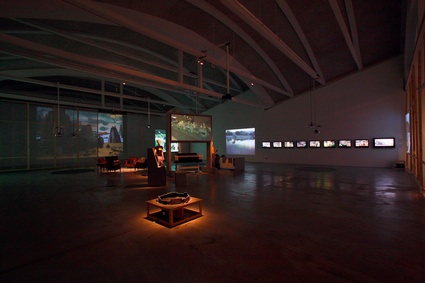 Image courtesy Laboral Centro de Arte y Creación Industrial
Image courtesy Laboral Centro de Arte y Creación Industrial
In a previous post, Feedforward. The Angel of History. Part 1, i focused on two chapters of the exhibition dedicated to wreckage and countermeasures. I’m now going to skip the section on the Aesthetic and Symbolic Language and concentrate on the ones that address globalization and agency.
The artworks that engage with the forces of economic globalization highlight how globe-spanning modes of industry –such as outsourcing and migration– uses digital technologies to intertwine even more intimately political, economic and cultural factors.
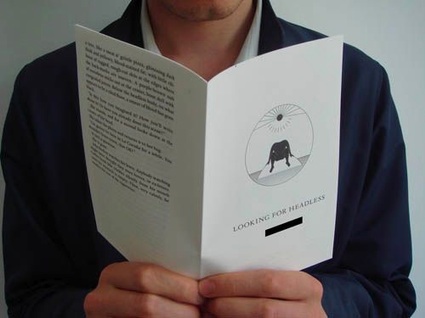 Goldin+Senneby, Looking for Headless, 2007-, ongoing project
Goldin+Senneby, Looking for Headless, 2007-, ongoing project
Headless (2007 -) is one of the most exciting projects i’ve seen at Feedforward. Part of my enthusiasm is due to Dr Angus Cameron‘s lecture during the symposium that accompanied the opening of the exhibition. Cameron presented himself as a Human Geographer at University of Leicester, acting as the emissary of artist collaboration GOLDIN + SENNEBY. He almost immediately added that this definition of himself might not even be true, ‘maybe i’m just an actor pretending to be a Human Geographer.’ The tone of the project was set.
Headless looks into offshore finance, and its production of virtual space through legal code.Through actions and theoretical pursuits, the artists interrogate the mythologies created by virtual economies and fictional personae. The project began in 2007 with the investigation of the offshore company Headless Ltd located in the Bahamas.
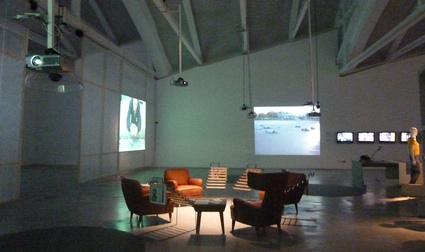
Goldin+Senneby have commissioned author John Barlow, using the pseudonym K.D., to be both an employee at an offshore consultancy company and the ghostwriter of a murder mystery where both real and fictional characters are allowed to appear in the story and in reality. Barlow went to the Bahamas to visit the offshore company Headless. He never managed to visit it. You can send money to an offshore company but because it should not have any physical presence, you cannot visit it.
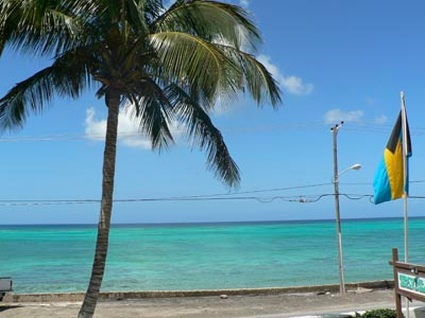 April 4th – View from the terrace, my last lunch in the Bahamas. Photo: John Barlow
April 4th – View from the terrace, my last lunch in the Bahamas. Photo: John Barlow
One of Goldin+Senneby’s hypothesis is that Headless Ltd is a contemporary incarnation of ‘Acéphale,’ the secret society initiated by philosopher Georges Bataille in the 1930s ((Acéphale does indeed come from the Greek a-cephalus, literally “headless”).
Headless is not a simulation. Several people are involved in the project and because each of them knows only a part of it, they play a role in an ongoing performance that is almost a pastiche of offshore practices. The project, however, uses human capital, not financial capital (no one gets paid.)
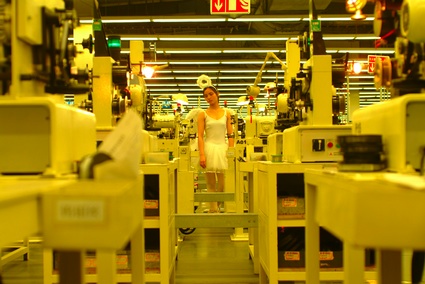
Mixing human drama and poetic narrative, Cao Fei‘s Whose Utopia? proposes a vision of a reality where even the most mind-numbing mechanized production system cannot crush human dreams and aspirations. The bitter-sweet video was shot at OSRAM China Lighting Ltd. factory in the Pearl River Delta, which has led the massive boom in China’s economy and has drawn workers from throughout China in search of a better life. Cao Fei’s video show the workers endlessly repeating the same gestures: they insert tiny filaments into delicate light bulbs, they test then pack them into boxes.
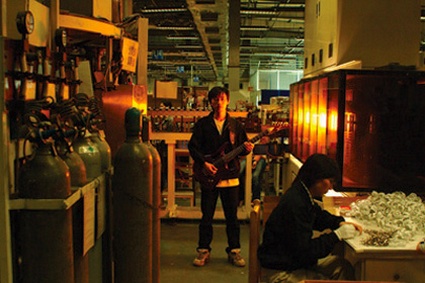
In the following chapter of Whose Utopia?, heavy machines and monotonous gestures give way to a “Factory Fairytale.” Workers become dancers and musicians gliding and playing while their colleagues haven’t left their seat in the chain. But that was just a dream. Reality kicks in by the end of the video.
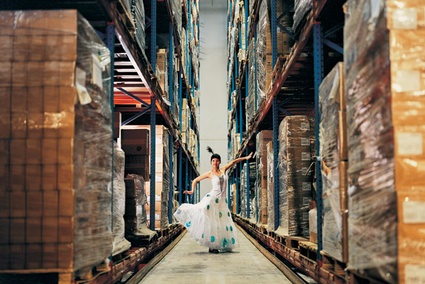 Cao Fei, Whose Utopia? 2006
Cao Fei, Whose Utopia? 2006
The last section of the exhibition explores possibilities of reconstruction and agency. Do we still have hope and space for collectivity and responsible action? Is it possible to clean up after the 20th century? What is democracy now? What does progress mean when older concepts, such as continuous economic growth, seem to have failed?
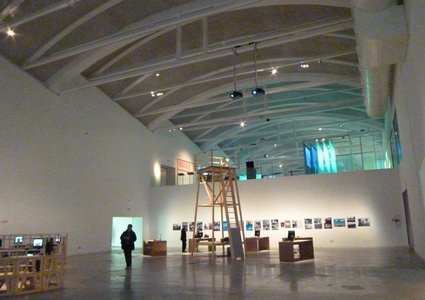 Daniel G. Andújar‘s Postcapital Archive is an installation that gives access to over 250,000 text, video, and audio documents that the artist has compiled from the Internet. The archive spans the years that separate the fall of the Berlin Wall from the attacks on September 11.
Daniel G. Andújar‘s Postcapital Archive is an installation that gives access to over 250,000 text, video, and audio documents that the artist has compiled from the Internet. The archive spans the years that separate the fall of the Berlin Wall from the attacks on September 11.
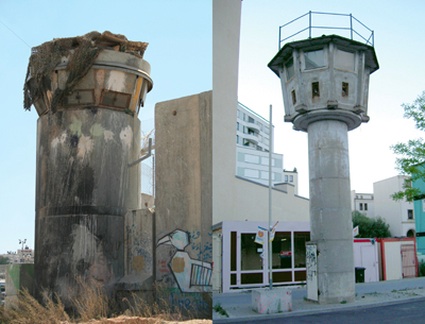 Daniel García Andújar, from: Postcapital Archive (1989-2001), Gaza-Berlin
Daniel García Andújar, from: Postcapital Archive (1989-2001), Gaza-Berlin
Although the collection of documents opens with the fall of the Berlin Wall, Andújar takes the perspective not of post-Communism, but of post-capitalism. How much have capitalist societies really adjusted and evolved in absence of their erstwhile counterparts? Deep changes have indeed affected the social, political, economic and cultural all over the world over the past two decades. However, new walls are being erected all over the world, both physically and metaphorically, by capitalist societies. What matter in Andujar’s installation is not so much the compilation of the videos and texts but what visitors make of them, the way they explore, learn, draw their own conclusions and interact with this mass of information.
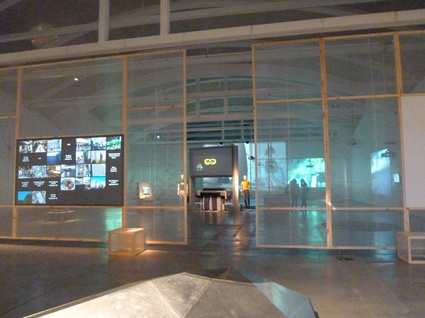 Feedforward. The Angel of History is a dense exhibition. I made three tours of it, read the press material, browsed through the catalog, attended the first day of the symposium and still feel the desire to see the show again. Feedforward is one of those rare shows that brings me back into the arms of media art when i least expect it.
Feedforward. The Angel of History is a dense exhibition. I made three tours of it, read the press material, browsed through the catalog, attended the first day of the symposium and still feel the desire to see the show again. Feedforward is one of those rare shows that brings me back into the arms of media art when i least expect it.
Feedforward is also very North American in the selection of the issues highlighted and the way they are covered. This is absolutely not a bad thing when the exhibition is so intelligent but the Euro-centric blogger that i am couldn’t stop wondering how European curators would have handled the same exhibition.
Just a last hurray for the elegant work done by Office for Strategic Spaces. The architects were in charge with the spatial design of the exhibition. Instead of separating the artworks into isolated thematic groups, the dividing walls that OSS designed are light and transparent enough to let the works coexist in a single landscape.
All my images from the exhibition.
FEEDFORWARD – The Angel of History is on view until April 5, 2010 at Laboral Centro de Arte y Creación Industrial in Gijón, Spain.
Previous posts about this exhibition: Instances of Use of United States Armed Forces Abroad 1798-2006 and Smoke and Hot Air.
